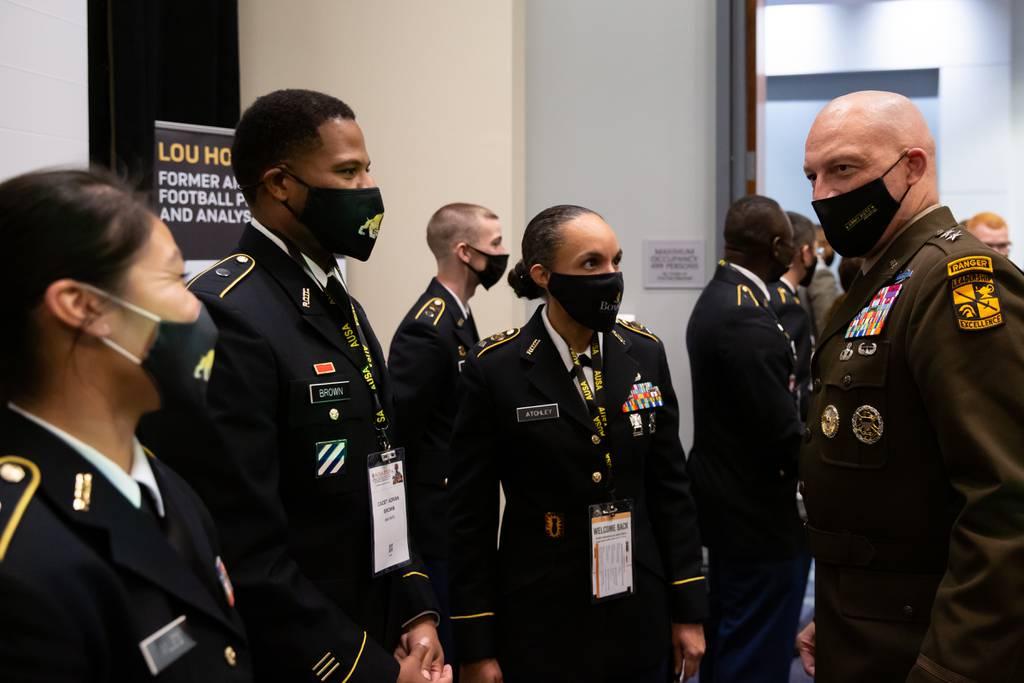
Army Cadet Command’s Reserve Officers Training Corps produces the majority of the service’s officers.
Until recently, the primary consideration when assigning young lieutenants to one of the Army’s 17 basic branches was the nebulous “needs of the Army,” along with an order of merit list that ranked every single cadet who was competing for an active-duty commission.
“Being an ROTC grad myself...what I went through years ago [was] really driven by the needs of the Army,” Maj. Gen. Johnny Davis told Army Times at the Association of the U.S. Army annual meeting Tuesday morning.
Davis took command of the Fort Knox, Kentucky-based Cadet Command in August and sat down for a one-on-one interview.
“What’s very different is that this is, I believe, more transparent than ever...compared to how I went through the branching sequence [more than] 30 years ago,” the general added.
Now the branching process takes into account the skills, talents and preferences of cadets. The process includes a new web portal where cadets take a talent assessment exam, learn what talents each branch wants, and submit their resume and preferred branches.
A key part of the new initiative, Davis explained, was a concerted effort to educate cadets on the importance of taking the talent assessments seriously and devoting time to learning about the branches.
“[Cadets] have to be more transparent...[they] need to be part of this process,” Davis said. “Or else, we may potentially have superstars who land in a branch that’s not one of their preferred branches...retain[ing] that talent is going to be harder if that’s not one of the branches they want to land in.”
For the first time, cadets are conducting branch interviews via video conferencing, which will allow them and representatives from the different branches to assess their mutual fit.
“Some interviewed with 15 branches; others interviewed with [only] two or three,” Davis noted. “It gives you the opportunity to educate yourself, and we have opened the doors to allow that to happen.”
Davis thinks that improving the talent management process and finding mutual fits between cadets and the job that they’ll hold as officers will increase the quality, morale and retention of junior leaders across the force.
“Once you land in the right job, all of the other things start to fall in place throughout your military career,” Davis said. “This is a good thing for the force, and I think it’s a good way to retain talent, and then continue to manage that talent throughout a successful career.”
The results of the first talent-based branching cycle will release soon, Davis said.